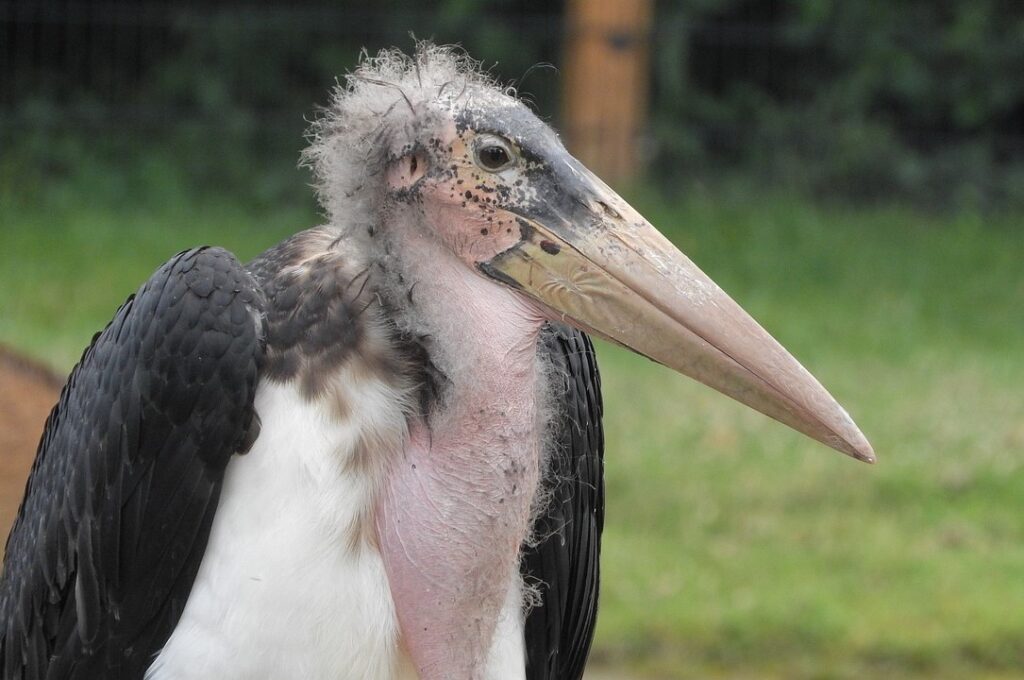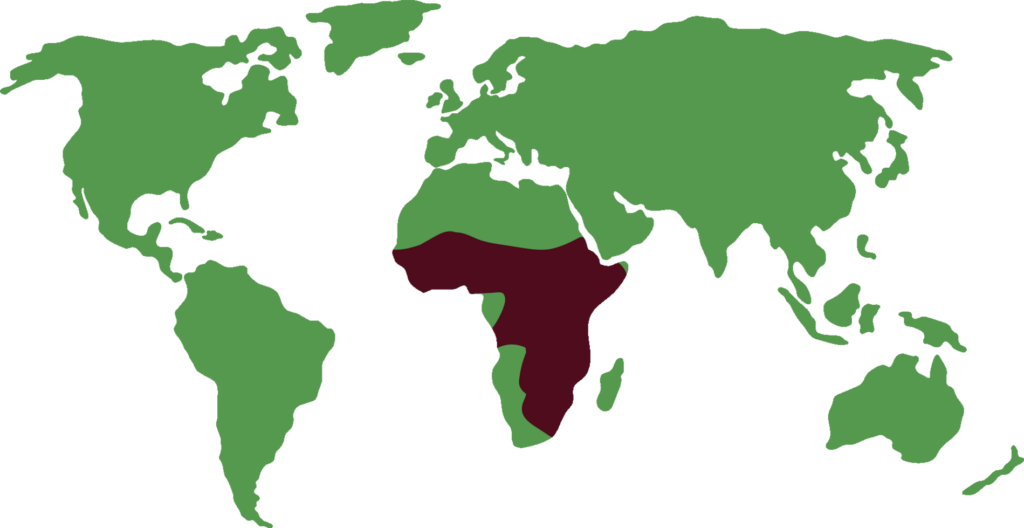MARABOU STORK
Leptoptilos crumeniferus

Length

150 cm
weight

7 kg
Lifespan

25 years
The marabou belongs to the stork family and is one of the tallest and largest birds in the world, reaching a height of 150 cm and a wingspan of 3.7 m.
General characteristics
The marabou is unmistakable for its size and peculiar appearance. Its plumage is slate black on the wings while the rest of the body is white. The legs are long and slender with thick toes and strong claws that serve mainly for walking rather than catching prey.
In contrast to the well-maintained body, the marabou’s head presents a rather scruffy appearance. The head has only bare skin with some fuzzy hair, so as the neck, and is covered with grayish scales and crusted dirt going from the beak to the forehead.
It has a huge beak and a ruff on the back of the neck. Something vert characteristic of them is the flaccid gular sac that´s hanging on its neck, which can be up to 30 cm long and which moves swinging in the opposite direction to its gait.
Feeding
They feed on carrion and small prey such as fish, frogs, insects, mammals, crocodile eggs, reptiles, etc.
Behaviour
The marabou is gregarious and gathers in colonies of hundreds of pairs for nesting and breeding. Individuals return to the same colony and nest year after year. They are sedentary, but when the rainy season approaches, they move to the interior of the continent.
In flight it is elegant and light, keeping its head backwards. They can reach considerable heights by taking advantage of thermal updrafts.
It´s a cunning and vigilant animal. It is always on the move and is very restless. Sometimes it can steal food from other scavengers. Like other storks, the marabou has no larynx, but they are capable enough to produce certain sounds with the help of their throat pouch and by making a rattling noise with their beaks.
Reproduction
Pairs remain faithful throughout life and male courtship consists of loud croaking and grunting sounds as the gular sac swells and turns red.
They nest in trees where the female lays 2 to 3 eggs and both parents incubate the eggs for a month. The newborn is not fully developed and need more than three months to take their first flight.
Threats
These animals are generally quite well adapted to human activities. They were hunted for their feathers to adorn clothing and hats.
Distribution
They inhabit in swampy areas and savannahs of sub-Saharan Africa, from the Sahel to South Africa.

Did you know?
As a scavenger, the naked head and neck are adaptations to avoid becoming clotted with blood when the bird´s head is inside corpses.
Unlike most storks, they fly with the neck retracted.
In some African cultures,the marabou is considered a sacred bird and is attributed with magical and healing powers.
Conservation status
